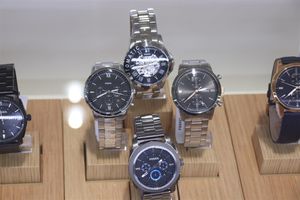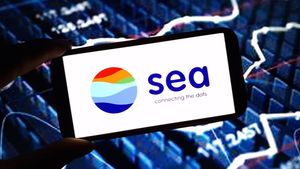SoftBank Corp. and Honda Start Use Case Verification of Technologies to Reduce Collisions Involving Pedestrians and Vehicles Using 5G SA and Cellular V2X
By:
Honda via
ACN Newswire
November 17, 2021 at 10:22 AM EST
TOKYO, Nov 17, 2021 - (JCN Newswire) - SoftBank Corp. and Honda R&D Co., Ltd. announced they have started a use case-based verification of technologies to reduce collisions between pedestrians and vehicles using a 5G standalone mobile communication system ("5G SA")(1) and a cellular V2X communication system ("cellular V2X")(2) in the effort to realize a society where both pedestrians and vehicles can enjoy mobility safely and with total peace of mind.
Using SoftBank's 5G SA experimental base station installed at Honda's Takasu Proving Ground (located in Takasu Town, Hokkaido Prefecture) and Honda's recognition technology, SoftBank and Honda are conducting technology verifications for the following three use cases:
Use Case Validation Overview
Use case 1: Reduce collisions involving pedestrians who are visible to vehicles
In an environment where a pedestrian can be seen from the moving vehicle, and when the vehicle's on-board camera recognizes the risk of a collision such as the pedestrian entering the roadway, the vehicle sends an alert to the pedestrian's mobile device directly or via an MEC server.(3) This will enable the pedestrian to take evasive action to prevent a possible collision with the vehicle.
Use case 2: Reduce collisions involving pedestrians who are not visible to vehicles
In an environment where a pedestrian cannot be seen from the moving vehicle due to obstacles such as parked cars along roadsides, the vehicle checks with mobile devices and other vehicles nearby about the presence or absence of a pedestrian in an area with poor visibility.
If there is a pedestrian present, the system notifies the pedestrian of the approaching vehicle and also notifies the vehicle of the pedestrian from the pedestrian's mobile device. When there is a second vehicle in a position to see the pedestrian that is in the area with poor visibility, that vehicle notifies the other vehicle of the pedestrian. These high-speed data communications between the moving vehicle, pedestrians, and other vehicles will help prevent collisions.
Use case 3: Reduce collisions involving pedestrians by sharing information about areas not visible to vehicles
The moving vehicles send information about the areas with poor visibility to the MEC server, and the MEC server organizes the information and notifies vehicles driving in the vicinity. When a vehicle receives the notification and approaches an area with poor visibility, it checks with the MEC server about the presence or absence of pedestrians. If there is a pedestrian present, the MEC server sends an alert to the vehicle and the pedestrian.
These high-speed data communications between the MEC server, vehicles, and pedestrians will help prevent collisions. In this use case, it is possible to send information about an area with poor visibility to vehicles that are not equipped with a camera-based recognition function, which makes it possible to prevent collisions between vehicles and pedestrians regardless of whether vehicles have recognition functions.
SoftBank and Honda had already been working together conducting technology verification for 5G-based connected vehicles by setting up a 5G experimental base station at the Takasu Proving Grounds. Though this new initiative, Softbank and Honda aim to realize a cooperative society where pedestrians and drivers can enjoy mobility safely and with total peace of mind by utilizing network technology that will be created by connecting pedestrians and vehicles. To this end, Softbank and Honda will pursue technological verification with a view to linking 5G SA and cellular V2X, with the goal to complete it before the end of fiscal year 2021 (the year ending March 31, 2022).
(1) Standalone 5G is a cutting-edge technology that combines new 5G dedicated core equipment and 5G base stations, unlike the conventional standalone system that uses 4G core equipment and combines it with 5G base stations.
(2) A communication standard established by 3GPP (a standardization organization that formulates standards for mobile communication systems), which is a technology that uses mobile networks for vehicle-to-vehicle, vehicle-to-infrastructure, vehicle-to-network and vehicle-to-pedestrian communications.
(3) MEC stands for Multi-access Edge Computing, a technology that optimizes and accelerates communications compared to cloud servers by deploying data processing functions in locations close to terminals, such as base stations.
- SoftBank, the SoftBank name and logo are registered trademarks or trademarks of SoftBank Group Corp. in Japan and other countries.
- Other company, product and service names in this press release are registered trademarks or trademarks of the respective companies.
Source: Honda
Copyright 2021 JCN Newswire . All rights reserved.
Using SoftBank's 5G SA experimental base station installed at Honda's Takasu Proving Ground (located in Takasu Town, Hokkaido Prefecture) and Honda's recognition technology, SoftBank and Honda are conducting technology verifications for the following three use cases:
Use Case Validation Overview
Use case 1: Reduce collisions involving pedestrians who are visible to vehicles
In an environment where a pedestrian can be seen from the moving vehicle, and when the vehicle's on-board camera recognizes the risk of a collision such as the pedestrian entering the roadway, the vehicle sends an alert to the pedestrian's mobile device directly or via an MEC server.(3) This will enable the pedestrian to take evasive action to prevent a possible collision with the vehicle.
Use case 2: Reduce collisions involving pedestrians who are not visible to vehicles
In an environment where a pedestrian cannot be seen from the moving vehicle due to obstacles such as parked cars along roadsides, the vehicle checks with mobile devices and other vehicles nearby about the presence or absence of a pedestrian in an area with poor visibility.
If there is a pedestrian present, the system notifies the pedestrian of the approaching vehicle and also notifies the vehicle of the pedestrian from the pedestrian's mobile device. When there is a second vehicle in a position to see the pedestrian that is in the area with poor visibility, that vehicle notifies the other vehicle of the pedestrian. These high-speed data communications between the moving vehicle, pedestrians, and other vehicles will help prevent collisions.
Use case 3: Reduce collisions involving pedestrians by sharing information about areas not visible to vehicles
The moving vehicles send information about the areas with poor visibility to the MEC server, and the MEC server organizes the information and notifies vehicles driving in the vicinity. When a vehicle receives the notification and approaches an area with poor visibility, it checks with the MEC server about the presence or absence of pedestrians. If there is a pedestrian present, the MEC server sends an alert to the vehicle and the pedestrian.
These high-speed data communications between the MEC server, vehicles, and pedestrians will help prevent collisions. In this use case, it is possible to send information about an area with poor visibility to vehicles that are not equipped with a camera-based recognition function, which makes it possible to prevent collisions between vehicles and pedestrians regardless of whether vehicles have recognition functions.
SoftBank and Honda had already been working together conducting technology verification for 5G-based connected vehicles by setting up a 5G experimental base station at the Takasu Proving Grounds. Though this new initiative, Softbank and Honda aim to realize a cooperative society where pedestrians and drivers can enjoy mobility safely and with total peace of mind by utilizing network technology that will be created by connecting pedestrians and vehicles. To this end, Softbank and Honda will pursue technological verification with a view to linking 5G SA and cellular V2X, with the goal to complete it before the end of fiscal year 2021 (the year ending March 31, 2022).
(1) Standalone 5G is a cutting-edge technology that combines new 5G dedicated core equipment and 5G base stations, unlike the conventional standalone system that uses 4G core equipment and combines it with 5G base stations.
(2) A communication standard established by 3GPP (a standardization organization that formulates standards for mobile communication systems), which is a technology that uses mobile networks for vehicle-to-vehicle, vehicle-to-infrastructure, vehicle-to-network and vehicle-to-pedestrian communications.
(3) MEC stands for Multi-access Edge Computing, a technology that optimizes and accelerates communications compared to cloud servers by deploying data processing functions in locations close to terminals, such as base stations.
- SoftBank, the SoftBank name and logo are registered trademarks or trademarks of SoftBank Group Corp. in Japan and other countries.
- Other company, product and service names in this press release are registered trademarks or trademarks of the respective companies.
Source: Honda
Copyright 2021 JCN Newswire . All rights reserved.
More News
View More
These Are the Hottest Upgrades From the Q3 Reporting Cycle ↗
Today 9:06 EST


Why Bitcoin ETFs Like IBIT May Be Set to Surge in 2026 ↗
Today 7:38 EST

Up Over 20% in 2025, These 3 Stocks Are Boosting Buyback Capacity ↗
December 01, 2025
Via MarketBeat

Congress Beat the Market Again—Here Are the 3 Stocks They Bought ↗
December 01, 2025
Via MarketBeat
Recent Quotes
View More
Stock Quote API & Stock News API supplied by www.cloudquote.io
Quotes delayed at least 20 minutes.
By accessing this page, you agree to the Privacy Policy and Terms Of Service.
Quotes delayed at least 20 minutes.
By accessing this page, you agree to the Privacy Policy and Terms Of Service.
© 2025 FinancialContent. All rights reserved.
>